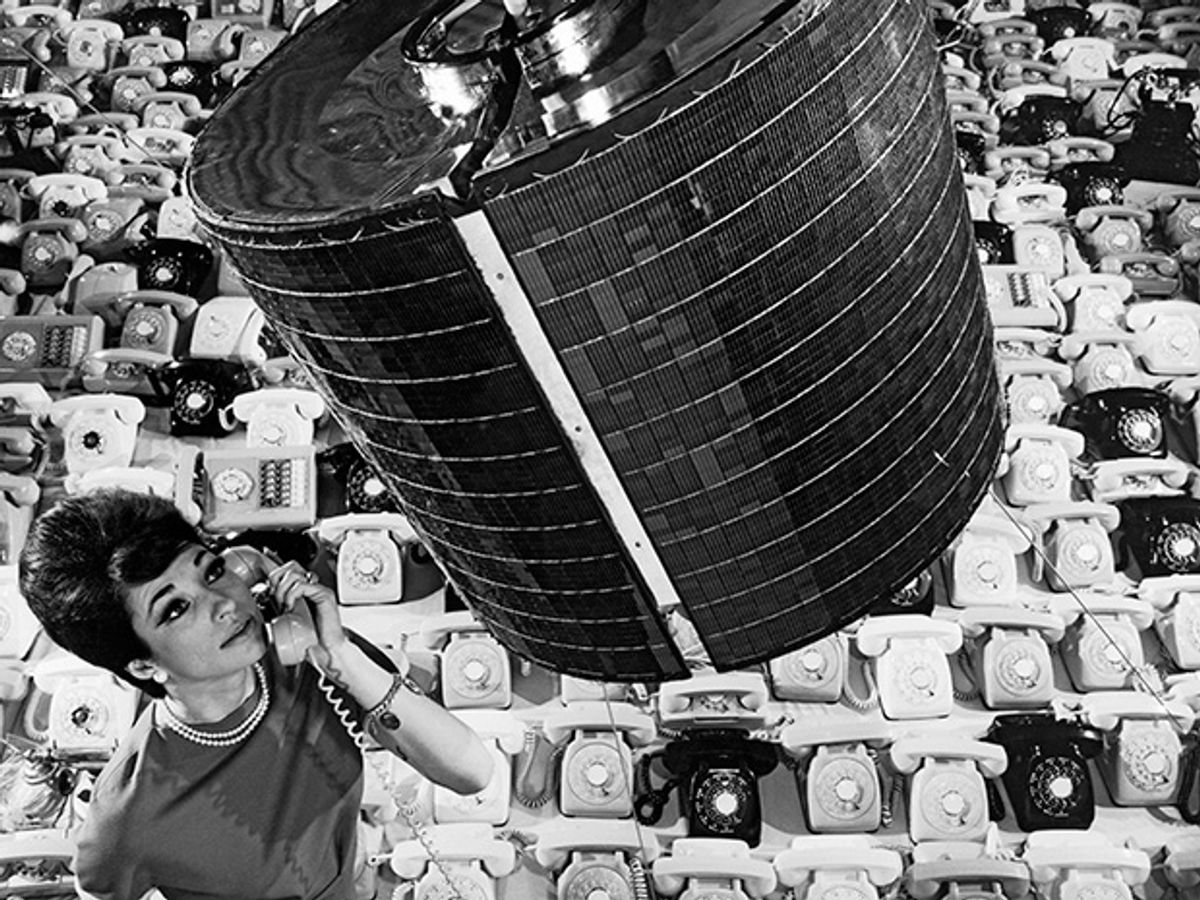The Intelsat 1 “Early Bird” communications satellite, built by Hughes Aircraft Co., was able to relay 240 simultaneous phone conversations between Europe and North America. But having all 240 lines apparently originate in one room in Los Angeles, as this Hughes publicity shot seems to suggest, would undoubtedly have created a slight bottleneck.
Intelsat 1 was the world’s first commercial communications satellite. Launched in 1965, it was placed into geosynchronous orbit above the Atlantic Ocean, where it remained operational for four years. In addition to carrying 240 voice transmissions, the satellite could relay telegrams, television signals, and whatever the 1965 equivalent of “high-speed data” was; however, it could do only one of those things at a time. Intelsat 1 was briefly reactivated in 1990 to celebrate its 25th anniversary. It’s still orbiting, inactive, presumably waiting for its 125th.
This article appears in the March 2016 print issue as “It’s Brussels on Line 239.”
Part of a continuing series looking at old photographs that embrace the boundless potential of technology, with unintentionally hilarious effect.
